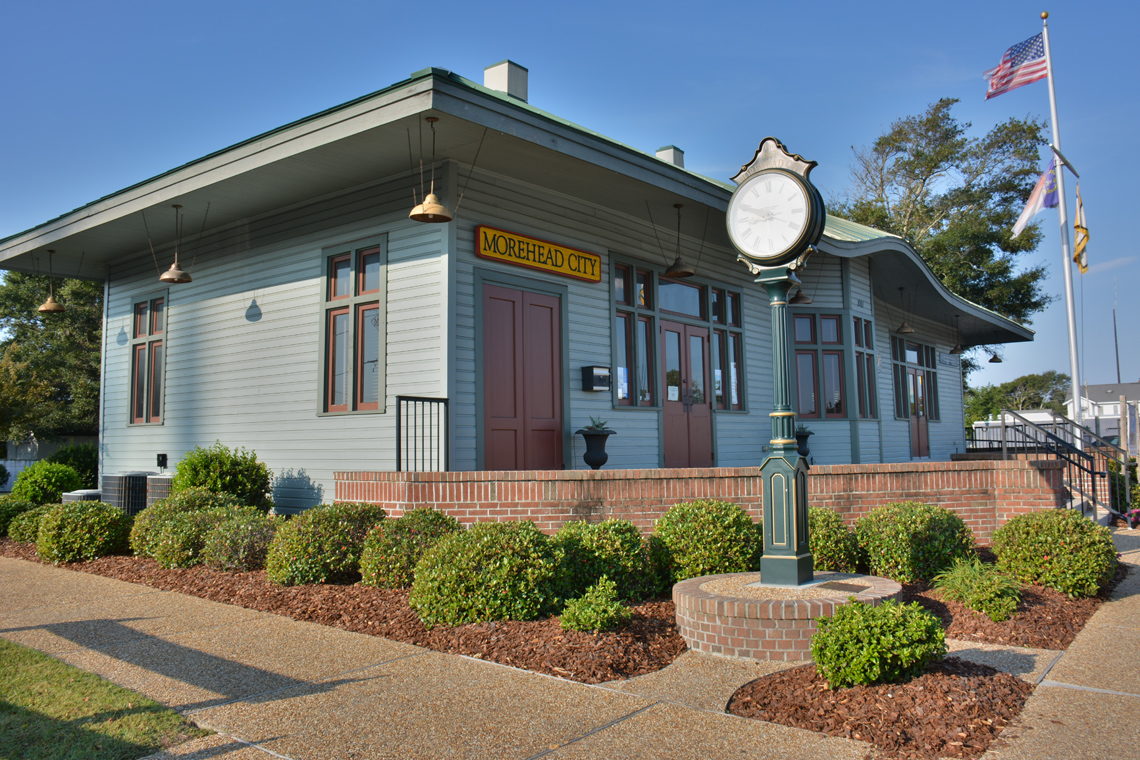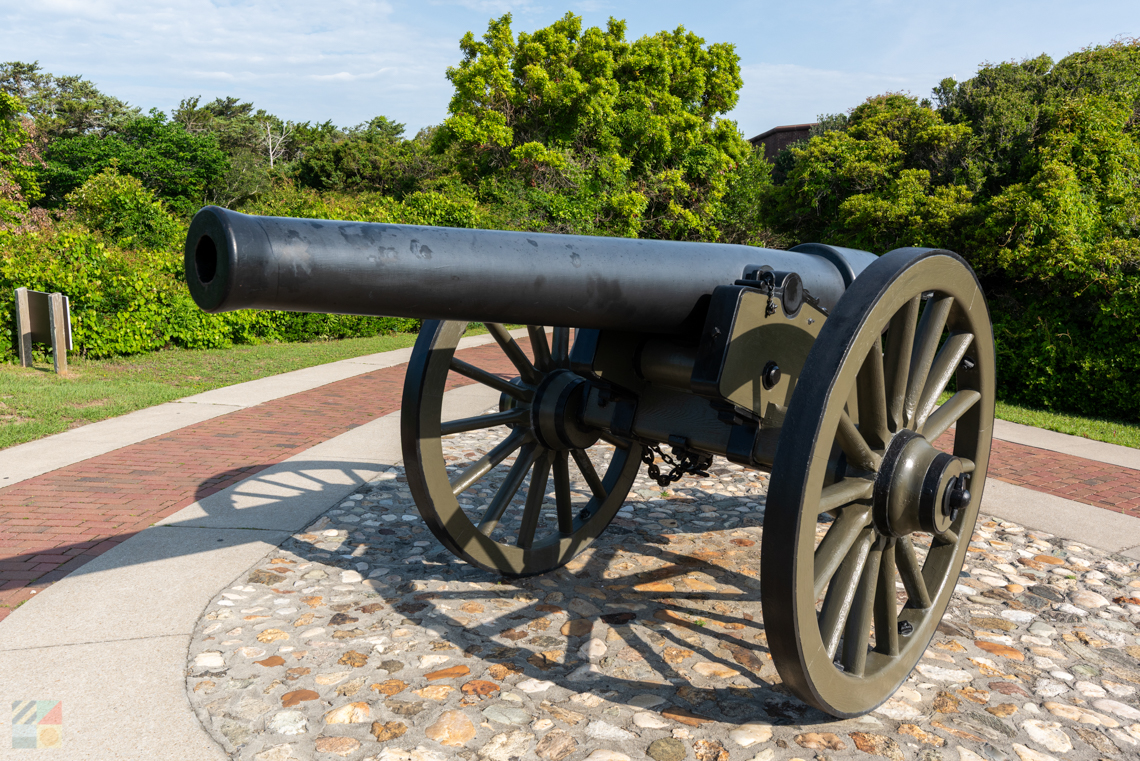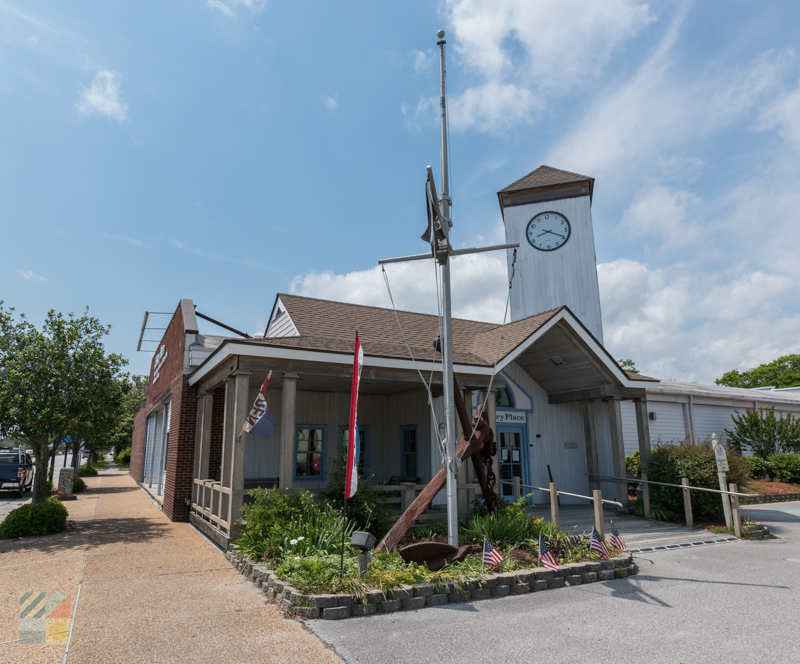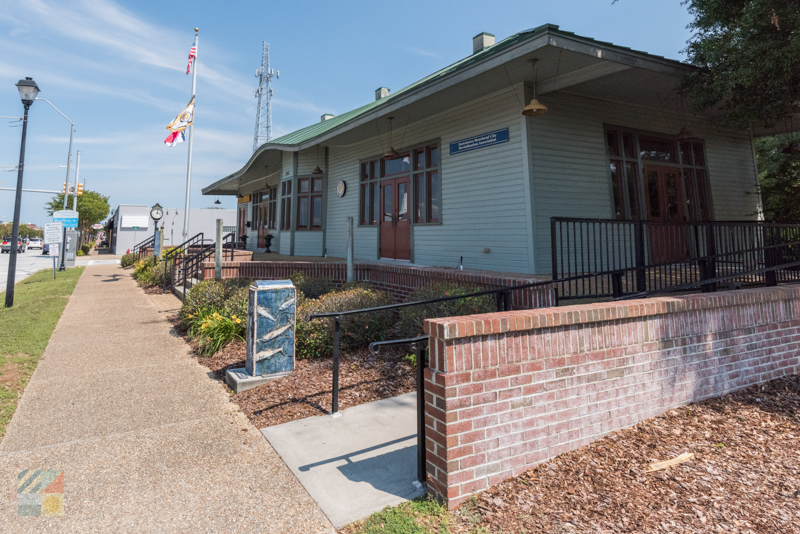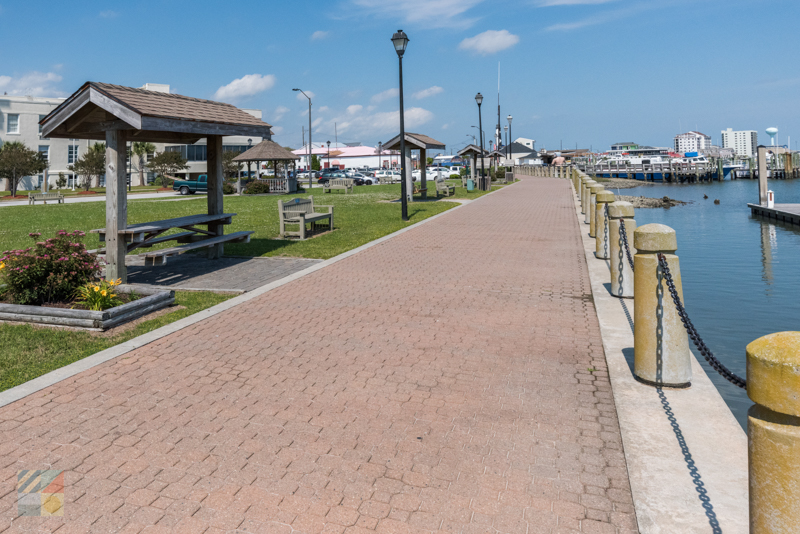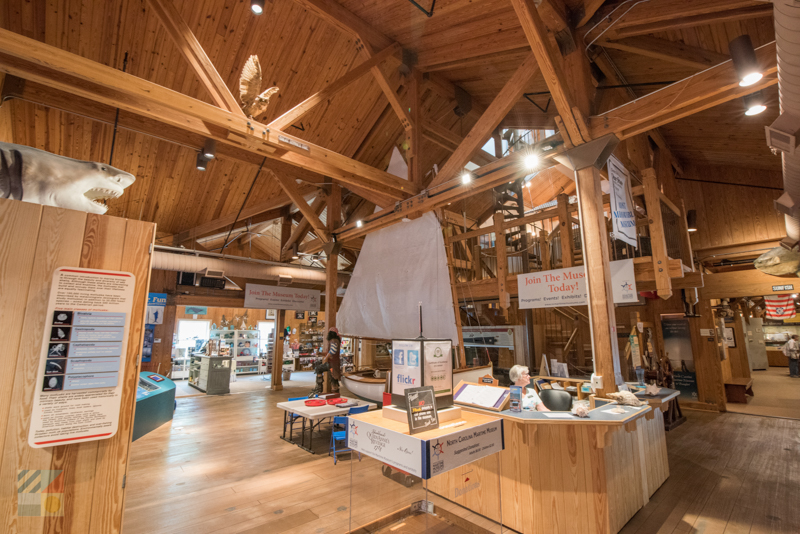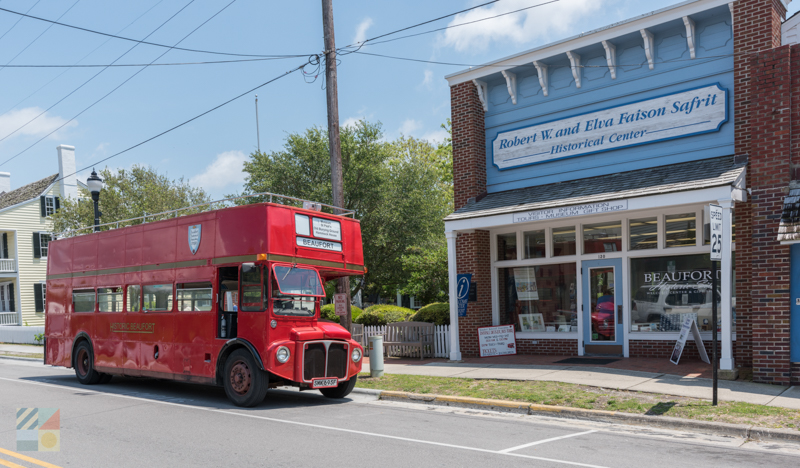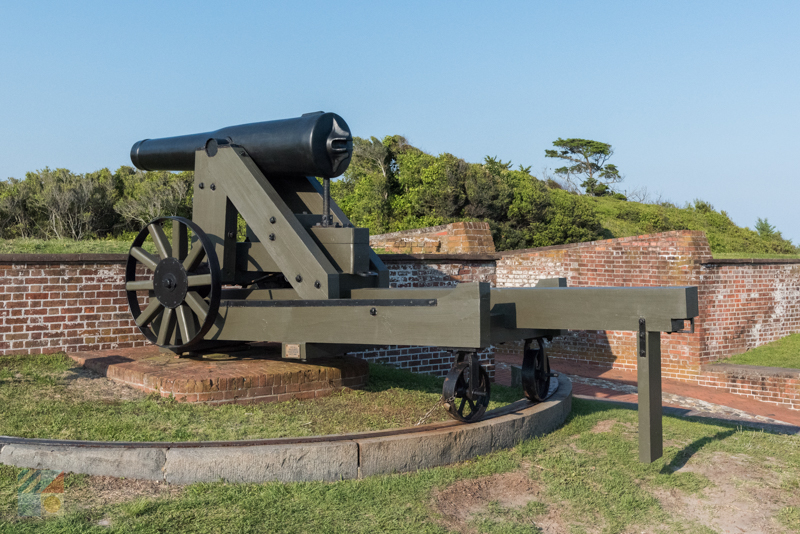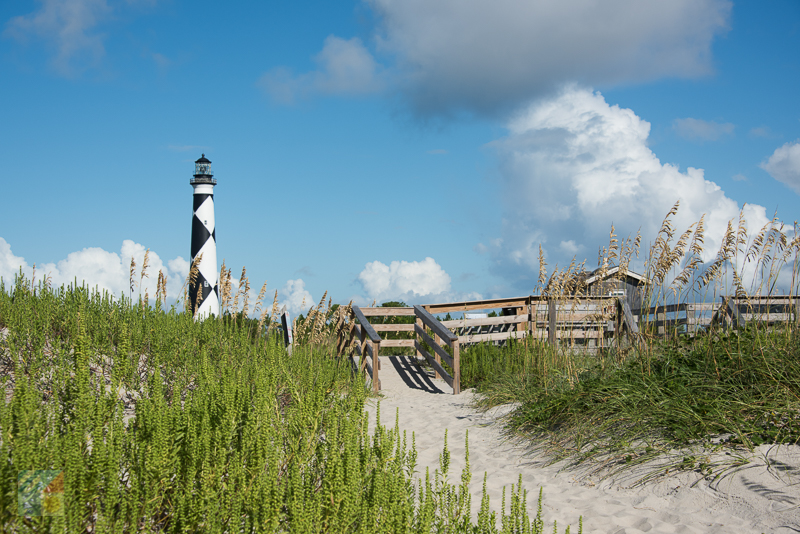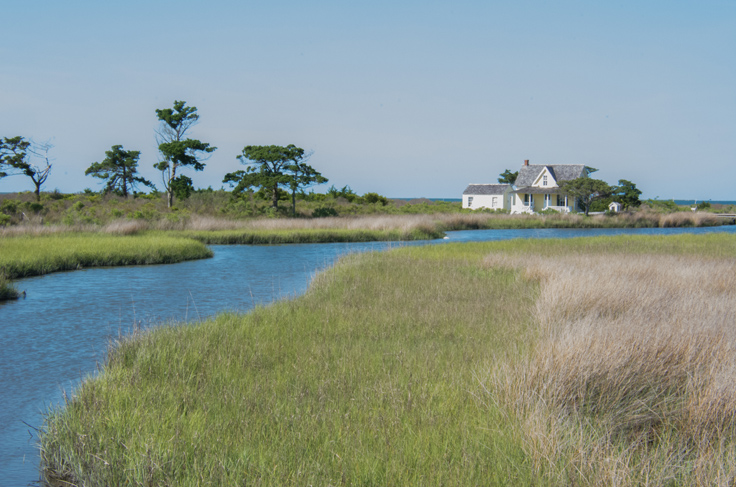Though not as old as some as its neighbors - like the adjacent and more than 300-year-old town of Beaufort – Morehead City nevertheless has a unique history that’s evident around every waterfront corner.
Envisioned by a governor, and eventually inhabited by residents fleeing a hurricane, the town of Morehead City stands out for its deliberate creation, as well as its slow but steady rise to fame as a maritime-oriented vacation destination.
The History of Morehead City
The Morehead City region has been occupied - or at least owned - since the early 1700s, when settlement began in present day Carteret County. In 1714, local prospector John Shackleford acquired the property that is now Morehead City in conjunction with a total of 1,400 acres that spanned the regional coastline. More area property was acquired just a few years later in 1723 by David Shepard, whose son eventually sold 600 acres to another new resident, William Fisher, in 1791.
Eventually, Fisher’s youngest daughter Sarah and her husband, Bridges Arendell, Sr., would acquire the property and become an important local family in the area. All of these early roots are evident in the various names that are found throughout the town of Morehead City – like Arendell Street or Shepard Point – and these early residents would lay the groundwork for what was to come.
By the mid-1800s, neighboring Beaufort was already well established, as was the outlying whaling community of “Diamond City” on the present day Shackleford Banks. It was in this environment that former North Carolina Governor John Motely Morehead, (who was the state’s governor from 1841-1845), came up with the idea to create a port city on the intersections of Beaufort and the Newport River.
Gov. Morehead’s ultimate goal was to create a major commercial port city, and he began visiting the site in 1853 to study the area and see if a large port community could indeed be accomplished. Impressed by the area – and recognizing that the newly developed North Carolina railroad would assist with the new town’s status as a major port – Morehead bought 600 acres from the prominent Arendells and formed the Shepard Point Land Company in 1857.
The terminus of the Atlantic and North Carolina Railroads was constructed in 1857, and soon after the property was purchased, Morehead divvied up the region into 150 lots that were sold at a public auction. The timing was ideal, as just days after the railroad was officially completed, the lots were all sold in anticipation of the new town.
Morehead City was officially incorporated in 1861, with a local Arendell - Bridges Arendell, Jr. - as the mayor, and the port, also known as Pier 1, became one of the largest ports in the region thanks to a natural location where the Newport River ran 18-20 ft. deep, and roughly a mile wide.
Unfortunately, this initial exceptional timing did not last for long. Just as Morehead City was starting to experience rapid growth, the Civil War put a stop to development, as Union forces invaded early on and soon occupied the town. Many citizens fled the region for the duration of the war, and after the conflict had ended, the economy of the newly established port - as well as the growth of the town itself -remained slow.
The railroad, however, remained a bit of a lifeline, and in the 1880s when the grand Atlantic Hotel was constructed at the tip of the peninsula, the area began to experience a wave of new visitors who would ride the train to access the decadent hotel, ballroom, piers, and ferries to the “Bogue Banks” – or the present day Crystal Coast.
A resurgence of the local population also occurred after a wave of battering hurricanes pummeled through Diamond City, or the Shackleford Banks. After these storms – and especially the Great Hurricane of 1899 – the fishermen who lived on the island migrated inland, settling in Morehead City, as well as nearby Harkers Island. The area these new residents occupied – a stretch of town in between 10th and 15th streets – would be coined the “Promised Land,” and the new fishermen became the heart of a revitalized commercial fishing industry that is still essential to the town today.
There were still more roadblocks ahead for Morehead City’s growth, however, and both the Great Depression and World War II dramatically affected the region’s popularity. During the mid-20th century, the downtown area had started to go downhill, as expansion occurred west of the area, and the original heart of Morehead City deteriorated.
This could have been the end of the downtown’s story, but in the 1980s, the town received a grant to bring the waterfront and infrastructure back to life, and after years of subsequent grants and / or private investments, the town began to blossom. Original structures were remodeled, new parks or businesses were established, and eventually, Morehead City became the popular tourism community it is today.
Though it was a slow road to be sure, today the town is a unique mix of traditional commercial fishermen, visitors and tourist-oriented business owners, and local residents. The railroad may be long gone, but the entrepreneurial spirit which first brought Morehead City to fruition is alive and well, thanks to a community-wide initiative to create a charming and beloved vacation destination.
Historical Spots and Landmarks around Morehead City
Visitors won’t have to venture to far to learn more about Morehead City. With a sprawling Historical District and a host of museums in the area, learning all about Carteret County can be as simple as a drive about town, or a rainy day excursion to one of these essential attractions.
History Museum of Carteret County
History Museum of Carteret County, also known as The History Place, is a quintessential stop for any visitor who wants to learn more about the local history of the town and the region in general. Home to the Rodney B. Kemp Gallery, which has ever-changing exhibits on local stories or chapters in the area’s legacy, visitors can explore the site multiple times and always learn something new. In addition to the museum exhibits, the center is also home to an auditorium, a conference room, and the Jack Goodwin Research Library, which has more than 10,000 different materials including books, photographs, and publications. From the area residents’ genealogy to relics from the Civil War, this all-encompassing site has information on all the important and often overlooked events of the county’s detailed history throughout the centuries.
Morehead City Historic District
The Morehead City Historic District, which was added to the National Register of Historic Places in 2003, is a collection of 123 contributing structures, residences, and other buildings that date back more than 100 years. While most of the buildings within the district come from the most recent “boom” in the town, or roughly from the time period 1900-1930, there are a few mid-1800s gems that survived the Civil War and the Union Force occupation, including the 1857 Dudley House. Other notable structures, which often serve as remarkable examples of Queen Anne or Colonial Style architecture, include the 1920s First Baptist Church, the 1923 Franklin Memorial Methodist Church and the former 1930 Morehead City Public School. A walk around town will highlight a number of the included buildings and structures, and visitors can also pick up a guide to the “Promise Land” walking trail, which highlights some of the earliest structures in town.
Downtown Morehead City / Jaycee Park
Taking a walk through the downtown area is like taking a step back in time, thanks to an original town layout that was plotted by former Governor Morehead more than 150 years ago, as well as the names of the streets themselves. Familiar leaders throughout the centuries – like Shepard, Arendell, Fisher, Bridges, and Shackleford – are found around veritably every corner, and the central Jaycee Park serves as an ideal starting point to take it all in. The tiny waterfront park also has several statues and plaques outlining important figures and events, and the views that extend across the channel to Sugarloaf Island – a pristine island parcel embedded in the Bogue Sound – are out of this world. As such, it’s a fine destination for history lovers and everyday sightseers alike.
NC Maritime Museum in Beaufort
One of the best destinations for coastal history in the region is located just next door to Morehead City in the neighboring town of Beaufort. The NC Maritime Museum in Beaufort is one of three state managed maritime museums, and is a detailed collection of exhibits that outline the significance of the local coastline, and the major events that helped shape the area. Visitors can learn about the history of boatbuilding and commercial fishing, the region’s role in the Civil War, the indigenous Native Americans who first carved out a living along the water, and even Beaufort’s long legacy of pirates. Essential exhibits of note include a wealth of Civil War artifacts, as well as artifacts from Blackbeard the Pirate’s ship, the Queen Anne’s Revenge, which was recently discovered just off the coast of Beaufort. With regular guest lecturers and educational programs for visitors of all ages, there’s always an opportunity to learn something new at the NC Maritime Museum.
The Beaufort Historic Site
The Beaufort Historic Site is a collection of nine structures in the heart of Downtown Beaufort that, when combined, are perfect representations of what life was like in the small town roughly three centuries ago. The small community has been painstakingly restored to its original condition, with expert guides and costumed interpreters who shed light on what daily life was like for Beaufort’s earliest residents. Structures of note within the complex include the oldest wood courthouse in the state - the 1796 Carteret County Courthouse, the 1825 John C. Manson House, the 1829 Old Jail (which was in operation until 1954), the 1859 doctor’s office and apothecary shop, and the 1778 Leffers Cottage. The site is also home to the oldest art gallery in North Carolina, as well as period gardens and landscaping which set a truly historic scene. Walking tours are regularly available of the Beaufort Historic Site, and visitors can also extend a tour to the historic surrounding area via a vintage 1960s English double decker bus.
Fort Macon State Park
A visit to the Fort Macon State Park is a must for Civil War history buffs, and is an easy venture for all Morehead City visitors thanks to its convenient location just east of Atlantic Beach, or roughly 10 or 15 minutes away. The historic Civil War fort was constructed in the 1820s to protect the coastal region against both pirates and foreign invaders, but was later a focal point during the Civil War, when Union Troops took over the fort early in the conflict during the Battle of Fort Macon in 1862. Remarkably, the fort remained relatively intact during the war, and modern visitors can explore the slightly sunken five-sided fort which boasts 26 casements, (or vaulted rooms), period military supplies, and even authentic Civil War era cannons. The park also has a claim to fame in its own right, as it was the first state park in North Carolina, and officially opened to the public in 1936. Tours are available regularly of the fort, and Fort Macon also hosts a number of educational programs which includes regular cannon firings, as well as occasional battle reenactments. Always fascinating, (and bordering several miles of beautiful shoreline which makes it a prime destination for a little history followed by a beach trip), Fort Macon is a must-see attractions for anyone who wants to delve deeper into the Crystal Coast’s military history.
Cape Lookout Lighthouse
The Cape Lookout Lighthouse may be a little tricky to reach for Morehead City visitors, but it’s an undeniably awe-inspiring site, and a historical icon that coastal lovers will adore. Visitors will need to take a ferry from Beaufort or Harkers Island to reach the lighthouse, which is located on the isolated Cape Lookout National Seashore, but once on the sand, they can view the interior of the 1859 structure, and even climb all the way to the top in the summer months for unparalleled views of the surrounding coastline. The lighthouse stands 163’ ft. tall, and is distinctive among the Outer Banks lighthouse for its black and white diamond pattern and isolated location. A visitors center is also located on-site which tells the story of the current lighthouse – as well as the inadequate lighthouses that preceded it – and also explains the importance of the Cape Lookout National Seashore in general. For a deeper historical exploration of the area, visitors can also take a walk or 4WD ride to Cape Lookout Village, which is a collection of original homes that were once occupied by a few hardy and salty residents who originally lived in the area before it became a National Seashore in the 1960s.
Portsmouth Island
For a time, Portsmouth Island was one of the most popular port towns along the southern Outer Banks, and Morehead City visitors can explore the remnants of this one thriving village with a day-trip expedition to this northernmost village along the Cape Lookout National Seashore. A ferry from the Cedar Island-bound towns of Davis or Atlantic is required to reach the historic village, but once on shore, visitors can explore a collection of homes that date back to the 1800s, and which are now abandoned although well maintained by the National Park Service. Portsmouth Island has not been occupied by year-round locals since the 1970s, but small reminders of its existence – which includes a former general store and the original Portsmouth Village United Methodist Church – remain to remind visitors of its rich history. Though a bit of a trek for Crystal Coast visitors, the authentic Portsmouth Village is a hidden gem historical destination that should not be missed by anyone who wants to learn more about the coastline, and the original Outer Banks residents.
Where to Learn More about Morehead City and Crystal Coast History
- For a taste of Morehead City’s rich past, head to the local antique stores. Arendell Street is lined with a wide array of antique shops, vintage shops, and thrift stores, which are overflowing with treasures of all varieties.
- A stroll through Downtown Beaufort is the perfect complement to a Morehead City historical exploration. The 300-year-old downtown area is teaming with historic structures, historical markers, and area information, and is a unique destination that will enchant visitors of all varieties.
- Don’t forget to check out the local book stores! The Morehead City and Beaufort bookstores are chock full of regional publications and non-fiction books which explore the region’s history in detail, from the arrival of pirates in the early 1700s, to the area’s role in the Civil War.
- For an in-depth exploration, plan a tour. Morehead City and especially Beaufort have several privately owned tour companies which can guide visitors through the region’s rich history via a walk, bike ride, or cruise around the town.
Morehead City may be one of the “newer” mainland communities along the North Carolina coastline, but its roots are distinctive, unique, and always fascinating. From its early beginnings as a planned commercial town to its natural transition to a tourist destination, this coastal town celebrates its history around every corner, which makes it a fantastic destination to learn all about the stories and inherent nautical culture of the Crystal Coast.
Visitors of all ages will have a blast at this destination that is designed for great times along the Crystal Coast shoreline. Professor Hacker's Lost Treasure Golf and Raceway is situated in the centrally located beach community of Salter Path, and...
The Crystal Coast is best explored from the water, and Morehead City Ferry Service will take explorers to some of the most remote and beautiful corners of this long stretch of Southern Outer Banks shoreline. Launching from the heart of Downtown...
Bird Shoal, Carrot Island, Sand Dollar Island & more! Dive into an exploration of some of the Southern Outer Banks’ most remote shorelines with an excursion that’s led by Island Ferry Adventures. Featuring both transport to the...
Jump aboard the pirate ship "REVENGE" at 600 Front Street in Beaufort, North Carolina. Our interactive voyages offer fun and adventure for families and swashbucklers of all ages. Come join our crew, take part in a pirate adventure, and enjoy festive...
Visitors can enjoy the Crystal Coast’s most coveted and hard-to-reach shorelines, or just embark on a breezy cruise of the open waters in search of dolphins and sunsets, with a trip that’s guided by Lookout Cruises. This local tour...
Discover a treasure or two to serve as a timeless reminder of your getaway to the Crystal Coast with a visit to one of the most unique jewelry stores in the Carteret County region, J Chalk Designs. Specializing in fine pieces that are truly one of a...
